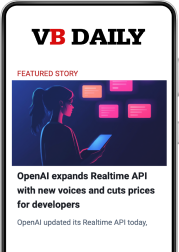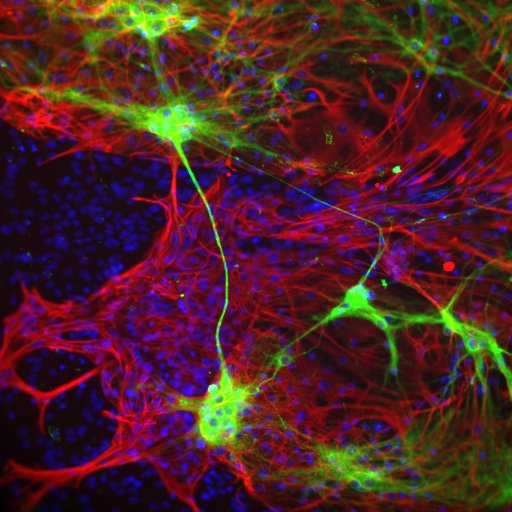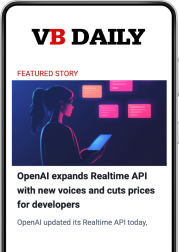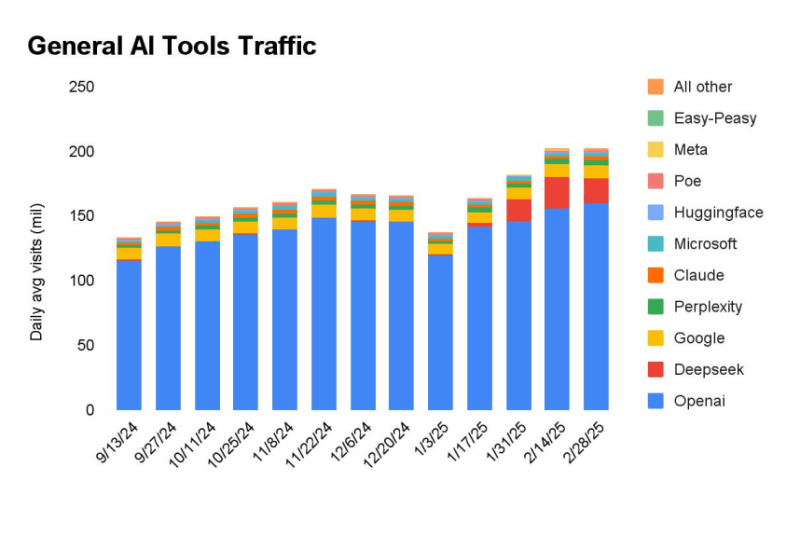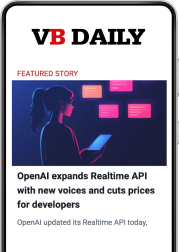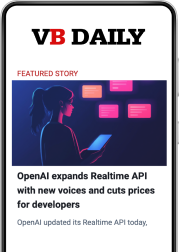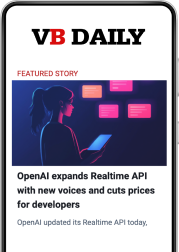Mistral AI drops new open-source model that outperforms GPT-4o Mini with fraction of parameters
Join our daily and weekly newsletters for the latest updates and exclusive content on industry-leading AI coverage. Learn More French artificial-intelligence startup Mistral AI unveiled a new open-source model today that the company says outperforms similar offerings from Google and OpenAI, setting the stage for increased competition in a market dominated by U.S. tech giants. The model, called Mistral Small 3.1, processes both text and images with just 24 billion parameters—a fraction of the size of leading proprietary models—while matching or exceeding their performance, according to the company. “This new model comes with improved text performance, multimodal understanding, and an expanded context window of up to 128k tokens,” Mistral said in a company blog post announcing the release. The firm claims the model processes information at speeds of 150 tokens per second, making it suitable for applications requiring rapid response times. By releasing the model under the permissive Apache 2.0 license, Mistral is pursuing a markedly different strategy than its larger competitors, which have increasingly restricted access to their most powerful AI systems. The approach highlights a growing divide in the AI industry between closed, proprietary systems and open, accessible alternatives. How a $6 billion European startup is taking on Silicon Valley’s AI giants Founded in 2023 by former researchers from Google DeepMind and Meta, Mistral AI has rapidly established itself as Europe’s leading AI startup, with a valuation of approximately $6 billion after raising around $1.04 billion in capital. This valuation, while impressive for a European startup, remains a fraction of OpenAI’s reported $80 billion or the resources available to tech giants like Google and Microsoft. Mistral has achieved notable traction, particularly in its home region. Its chat assistant Le Chat recently reached one million downloads in just two weeks following its mobile release, bolstered by vocal support from French President Emmanuel Macron, who urged citizens to “download Le Chat, which is made by Mistral, rather than ChatGPT by OpenAI — or something else” during a television interview. The company strategically positions itself as “the world’s greenest and leading independent AI lab,” emphasizing European digital sovereignty as a key differentiator from American competitors. Small but mighty: How Mistral’s 24 billion parameter model punches above its weight class Mistral Small 3.1 stands out for its remarkable efficiency. With just 24 billion parameters—a fraction of models like GPT-4—the system delivers multimodal capabilities, multilingual support, and handles long-context windows of up to 128,000 tokens. This efficiency represents a significant technical achievement. While the AI industry has generally pursued ever-larger models requiring massive computational resources, Mistral has focused on algorithmic improvements and training optimizations to extract maximum capability from smaller architectures. The approach addresses one of the most pressing challenges in AI deployment: the enormous computational and energy costs associated with state-of-the-art systems. By creating models that run on relatively modest hardware—including a single RTX 4090 graphics card or a Mac with 32GB of RAM—Mistral makes advanced AI accessible for on-device applications where larger models prove impractical. This emphasis on efficiency may ultimately prove more sustainable than the brute-force scaling pursued by larger competitors. As climate concerns and energy costs increasingly constrain AI deployment, Mistral’s lightweight approach could transition from alternative to industry standard. Why Europe’s AI champion could benefit from growing geopolitical tensions Mistral’s latest release emerges amid growing concerns about Europe’s ability to compete in the global AI race, traditionally dominated by American and Chinese companies. “Not being American or Chinese may now be a help, not a hindrance,” The Economist reported in a recent analysis of Mistral’s position, suggesting that as geopolitical tensions rise, a European alternative may become increasingly attractive for certain markets and governments. Arthur Mensch, Mistral’s CEO, has advocated forcefully for European digital sovereignty. At the Mobile World Congress in Barcelona this month, he urged European telecoms to “get into the hyperscaler game” by investing in data center infrastructure. “We would welcome more domestic effort in making more data centers,” Mensch said, suggesting that “the AI revolution is also bringing opportunities to decentralize the cloud.” The company’s European identity provides significant regulatory advantages. As the EU’s AI Act takes effect, Mistral enters the market with systems designed from inception to align with European values and regulatory expectations. This contrasts sharply with American and Chinese competitors who must retrofit their technologies and business practices to comply with an increasingly complex global regulatory landscape. Beyond text: Mistral’s expanding portfolio of specialized AI models Mistral Small 3.1 joins a rapidly expanding suite of AI products from the company. In February, Mistral released Saba, a model focused specifically on Arabic language and culture, demonstrating an understanding that AI development has concentrated excessively on Western languages and contexts. Earlier this month, the company introduced Mistral OCR, an optical character recognition API that converts PDF documents into AI-ready Markdown files—addressing a critical need for enterprises seeking to make document repositories accessible to AI systems. These specialized tools complement Mistral’s broader portfolio, which includes Mistral Large 2 (their flagship large language model), Pixtral (for multimodal applications), Codestral (for code generation), and “Les Ministraux,” a family of models optimized for edge devices. This diversified portfolio reveals a sophisticated product strategy that balances innovation with market demands. Rather than pursuing a single monolithic model, Mistral creates purpose-built systems for specific contexts and requirements — an approach that may prove more adaptable to the rapidly evolving AI landscape. From Microsoft to military: How strategic partnerships are fueling Mistral’s growth Mistral’s rise has accelerated through strategic partnerships, including a deal with Microsoft that includes distribution of its AI models through Microsoft’s Azure platform and a $16.3 million investment. The company has also secured partnerships with France’s army and job agency, German defense tech startup Helsing, IBM, Orange, and Stellantis, positioning itself as a key player in Europe’s AI ecosystem. In January, Mistral signed a deal with press agency Agence France-Presse (AFP) to allow its chat assistant to query AFP’s entire text archive dating back to 1983, enriching its knowledge base with high-quality journalistic content. These partnerships reveal
